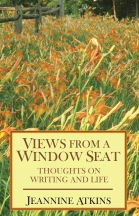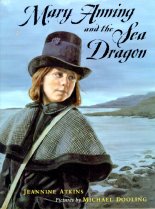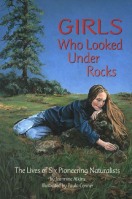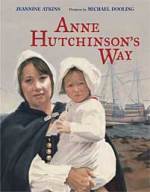Many of us enjoyed crayons or paint as children, but artistic confidence often falls away as we grow. Women who continue to pursue art through high school, college, and grad school find themselves ever-increasingly among male colleagues and instructors. According to the fabulous researchers who go by the name Guerrilla Girls, art made by women makes up less than five percent of the holdings of most major museums and most galleries aren’t much better.
If it’s tough for women artists to find respect now, how did they deal with obstacles decades ago? Using fictional devices to develop scenes rich with dialogue and detail, each of the following novels published in 2015 features a real woman who was well known at the time, then mostly forgotten.

In The House of Hawthorne, we meet Sophia Peabody as a young woman with artistic talent that her mother considered a holy gift she feared marriage would destroy. Sophia takes the risk, marrying the handsome author Nathaniel Hawthorne after years of secretly courting. The novel begins in Massachusetts, but excursions are made to Cuba, England, and Italy as author Erika Robuck presents the tensions between Sophia’s allegiance to her paint box and the pleasures and tasks of being a wife and mother.
Sarah Brown, one of the daughters of abolitionist John Brown, lived during the same period as Sophia Hawthorne. The Mapmaker’s Children is a dual narrative with a theme of legacy. One strand features a contemporary woman who’s struggling in her marriage, while the other presents Sarah Brown as an artist with a mission. Author Sarah McCoy created a fictional device of maps hidden within artwork to help former slaves escape on the Underground Railroad.

While Sophia Hawthorne thought of her art as spiritual and some of Sarah Brown’s work was politically motivated, at least two women in Paris during this period were reveling in color or clay, creating art for its own sake. In Rodin’s Lover, Heather Webb conveys the joy the young Camille Claudel found in shaping clay and her conviction that she deserved this pleasure. Auguste Rodin offers sculpting lessons in exchange for Camille’s work mixing plaster, kneading clay, or sweeping floors. Later, Camille not only becomes his lover, but teaches him, too. The tenderness that exists along with passion in her sculptures influences what Rodin puts into his larger bronze figures. Camille’s relationship with Rodin and her own mind grow troubled, then even art, her source of strength, becomes endangered.
Models were important to these sculptors, and in an era before photography was widely used, to many painters, too. Paris Red by Maureen Gibbon begins as a fictional version of Victorine Meurent sketches a cat sleeping in a shop window. Wearing a mended dress and bottle-green boots, Victorine catches the eye of Édouard Manet. She puts away her pencil and tablet, and walks with him past cafés and kiosks, sharing a paper cone of cherries. Victorine soon becomes his model and muse. We see her pose for paintings, take explicitly described breaks on divans, paint, and run errands such as picking up pastels in a shop where she’s drawn to a small box with seven shades of blue, looking like “bits of sky that could fit on my hand.”

Priya Parmar’s Vanessa and her Sister crosses the Channel and moves to the early twentieth century to show the relationship of painter Vanessa Bell and her sister, novelist Virginia Woolf. Told in letters, telegrams, post cards, journal entries, and lists of paints to purchase (British Ink, Polished Silver, and Rose Doré), the novel starts as the sisters settle in the Bloomsbury neighborhood of London, where they spend evenings discussing new styles in art and literature with bohemian neighbors. Vanessa increasingly resents the way Virginia depends on her for care and forever sees her as one of the maternal figures she celebrated in novels such as To the Lighthouse and Mrs. Dalloway. Vanessa works hard to have her paintings displayed with other Post-Impressionists, where they stand out for their domestic imagery as well as their bold colors.
Another driven writer and her artistic sister are featured in Little Woman in Blue: A Novel of May Alcott. Many woman writers remember their dreams taking shape from the portrait Louisa Alcott created in Little Women of an independent young woman wearing an ink-stained smock in a garret. Girls who liked to paint were inspired, too, by the youngest sister. But some wanted to throw the novel across the room after the artistic Amy travels to Europe and upon seeing great art, decides to give up her own attempts and marry. May Alcott, the sister who was the model for this young woman, must have been furious, too. My novel, Little Woman in Blue, shows the determination of the real May Alcott to move beyond what her sister scripted as her future.
The Muralist by B.A. Shapiro brings us closest to our time, with the contemporary story of a researcher at Christie’s Auction House trying to discover the truth of her ancestor, who may have shaped the history of Abstract Expressionism. As in Shapiro’s previous novel, The Art Forger, a woman’s work isn’t given due credit, but instead of a plot involving Degas and the Gardener Museum theft, we read about the fictional character of Alizée who struggles to help relatives move from France to escape the Nazi occupation, while working on murals for the Works Progress Administration as well as her own paintings. Her friends include Mark Rothko, Lee Krasner, Jackson Pollock, and others shaping art in New York just before World War II. Powerful, graceful, and down-to-earth Eleanor Roosevelt puts in an appearance, and it’s fascinating to see the new art through her eyes.
By the early twentieth century, women had won the right to vote, own property, and fill art departments, at least as students. Fashions and paint colors have come and gone: lead white and cadmium red have been taken off shop shelves due to health risks. But these novels ask us to consider what seems eternal about art, romance, marriage, and sisterhood, as well as what seems well past time to change.









Reblogged this on American Girls Art Club In Paris. . . and Beyond and commented:
It’s been a wonderful year for historical fiction about female artists! Check out this post by Jeaninne Atkins, the author of Little Woman in Blue.
By: americangirlsartclubinparis on December 7, 2015
at 4:15 pm
Thanks very much for spreading the word. It was a lot of fun to read these varied books and then gather the artists together. — I was at the MFA today, where there’s a special exhibit on Sargent murals (as well as two Vermeers!) and thought of you.
By: jeannineatkins on December 7, 2015
at 9:39 pm
Thanks for sharing these Jeannine – just in time for my Christmas list!
By: Tara Smith on December 7, 2015
at 7:56 pm
Thanks. I do love a book-filled wish list.
By: jeannineatkins on December 7, 2015
at 9:39 pm
Jeannine, I wanted to add from my recent emil to you that last night on PBS they featured art created by member s of the British royal family, throughout the past few generations. Very interesting and impressive! Apparently sculpting was considered an acceptable art form for women. I did not know this.
Laurie
Laurie DeVault, M.Ed. http://www.lauriedevault.com (paintings) https://www.facebook.com/LaurieDeVaultFineArt http://fineartamerica.com/profiles/laurie-devault.html http://www.alovingeyephotography.com (413) 657-1021 lrdevault@icloud.com
>
By: Laurie DeVault on December 7, 2015
at 11:18 pm
Hi, I remember seeing something about how the arts were valued in their private/royal educations, with watercolors being done by princesses in the 1800s, and also King Charles did some nice nature studies both as a teen and later in life. The tradition may have stopped with him, which is too bad. Thanks for mentioning! I didn’t know about the sculpting part — that seems messier.
By: jeannineatkins on December 8, 2015
at 2:11 pm
What a wonderful post!!! I loved House of Hawthorne, The Mapmaker’s Children, and – of course! – Little Woman in Blue. The others are definitely moving up on my TBR list. Thanks for the great recommendations, Jeannine!
By: Stephanie Burns on December 9, 2015
at 12:19 pm
Honored to recommend books to an extraordinary book-recommender! Happy reading, and holidays!
By: jeannineatkins on December 9, 2015
at 12:51 pm
[…] Here’s a great list of historical novels about women artists. If you know of others in this category, please add the titles in the comments. […]
By: Barrett Browning, Aurora Leigh: Bear No Malice Teaser Epigraph 3 | Clarissa Harwood on November 13, 2018
at 2:18 pm